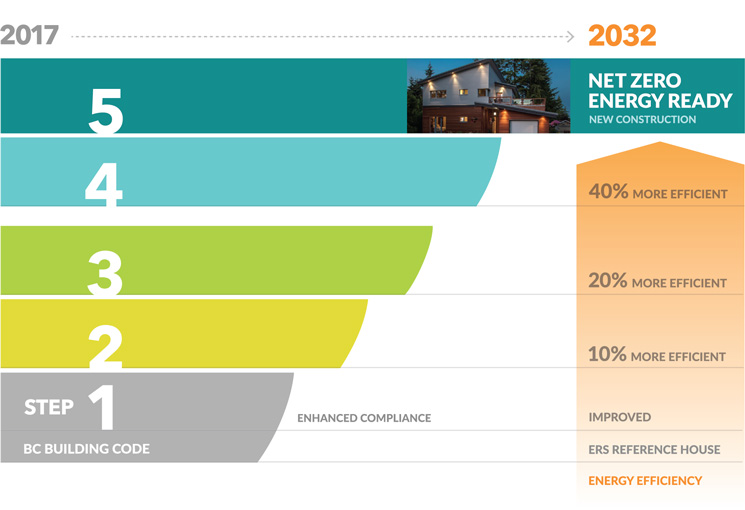Learn about the innovative approaches being used to build better homes and the energy savings for home owners.
LEEP Video Project - Series Three
These videos share case studies that inspire builders to use an Integrated Design Process (IDP). IDP involves early engagement of key project team members to allow homes to be built with optimal performance, cost efficiency, occupant comfort and resilience in mind. Using an IDP allows multiple client objectives to be realized.
Learn more about the LEEP field-trial homes and you’ll be motivated to step up with the BC Energy Step Code. Natural Resources Canada brought LEEP to B.C. in partnership with BC Housing, BC Hydro, FortisBC, City of Vancouver and the City of New Westminster.
Video
LEEP Video – Nanaimo
This Step 5 single-family home in Nanaimo demonstrates how the Integrated Design Process (IDP) can help builders achieve a variety of unique project goals. The home is located on a property with challenging site conditions. It was designed to be self-sufficient with space for urban agriculture, on-site water collection, solar panels, EV charging stations, and accommodations for future technology.
LEEP Video – Courtenay
Using the Integrated Design Process (IDP), this team was able to transition from Step 3 to Step 5 using industry standard building materials and with no additional construction costs. The home maintained the same look and feel as other spec homes in the neighbourhood.
LEEP Video – Invermere
The owner of this 1,000 sq. ft home wanted an affordable and efficient Step 5 home. With escalating material costs, the Integrated Design Process (IDP) helped the builder to deliver everything the homeowner wanted and to keep the project on budget.
LEEP Video – Whistler
When the owner wanted their new high-performance home completed within a short timeline, the Integrated Design Process (IDP) helped identify strategies to make it happen. The project was categorized as a CHBA Net Zero Ready renovation. By keeping the home’s original foundation and by using prefabricated panels, the project was completed on time and with significantly reduced embodied carbon emissions.
LEEP Video – Salt Spring Island
Located on Salt Spring Island, this home is a Step 5 and categorized as a CHBA Net Zero modular custom house in Canada. As experienced project managers in the resource sector, the Integrated Design Process (IDP) was a natural fit for these first-time developers, and helped them achieve an efficient project and successful build.
LEEP Video – Kelowna
This project is part of the Wilden Living Labs, a research initiative which aims to build and assess high performance homes. The project team used the Integrated Design Process (IDP) on this Step 5 home to help manage thermal comfort in extreme weather, optimize building form, and right sizing mechanical equipment.
What is LEEP?
LEEP enables builders to reduce their time and risk by using innovations that can help them build higher performance homes better, faster and more affordably. Builder groups use LEEP to collaborate on opportunities and innovations for home building in their markets.
The Local Energy Efficiency Partnership (LEEP) process was first developed by the Office of Energy Research and Development at Natural Resources Canada (NRCan). This business-to-business initiative has since been adopted in several Canadian provinces, now including B.C.
BC Housing, BC Hydro, Fortis BC, the City of Vancouver, and the City of New Westminster worked together to get LEEP started in the province and local home builders associations also played a key role in delivering the initiative.
BC Energy Step Code
The Province has committed to taking incremental steps to increase energy-efficiency requirements in the BC Building Code to make buildings net-zero energy ready by 2032. The BC Energy Step Code – a part of the BC Building Code – supports that effort.
The BC Energy Step Code only applies to new construction of the following building types:
- Residential (Part 9) – Province-wide
- Multi-unit residential and commercial (business and personal services and mercantile) – only in climate zone 4 (i.e., Lower Mainland, southern Vancouver Island, southern Okanagan).
Building owners may voluntarily build to the requirements in the BC Energy Step Code. Incentives are available for achieving higher standards.
